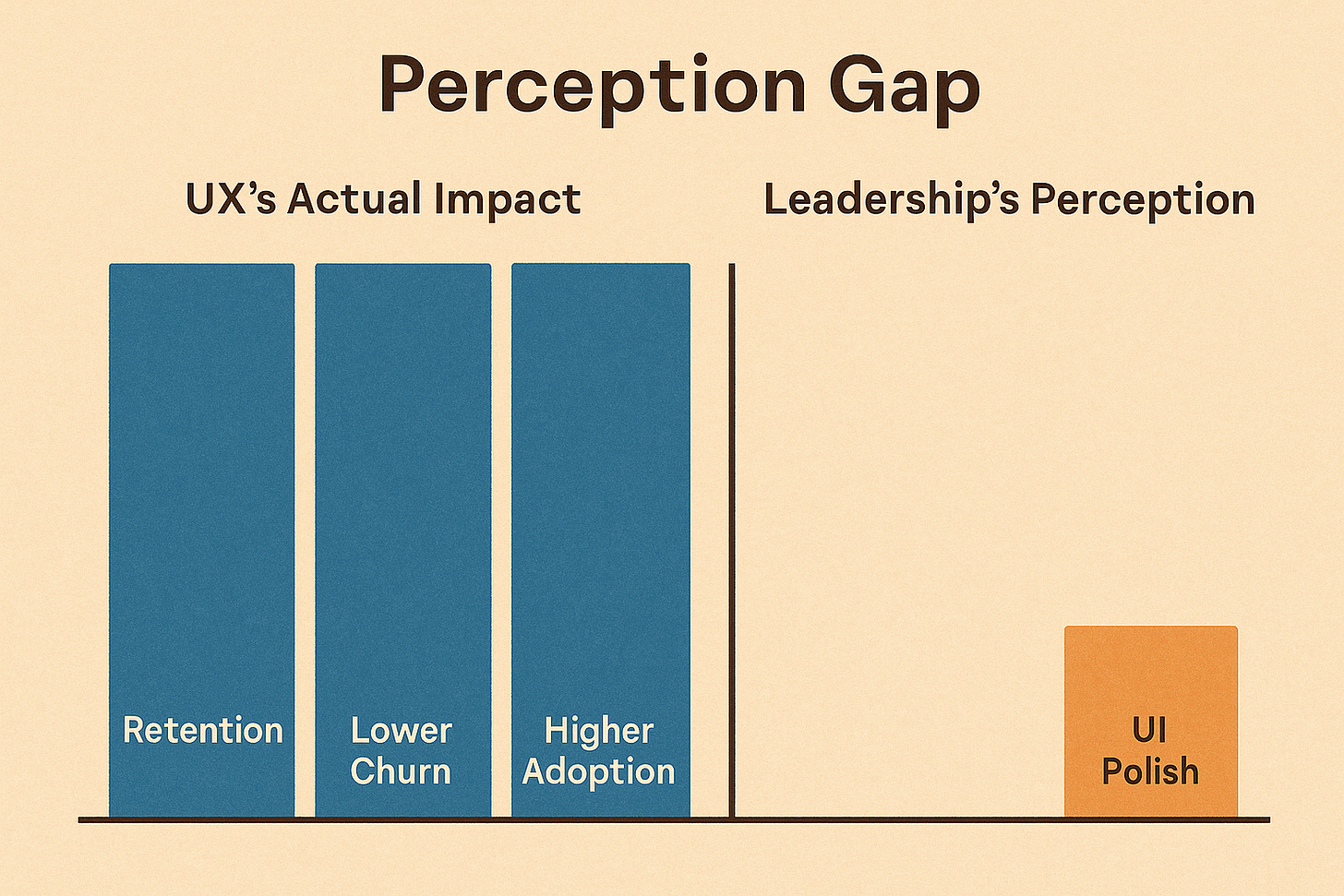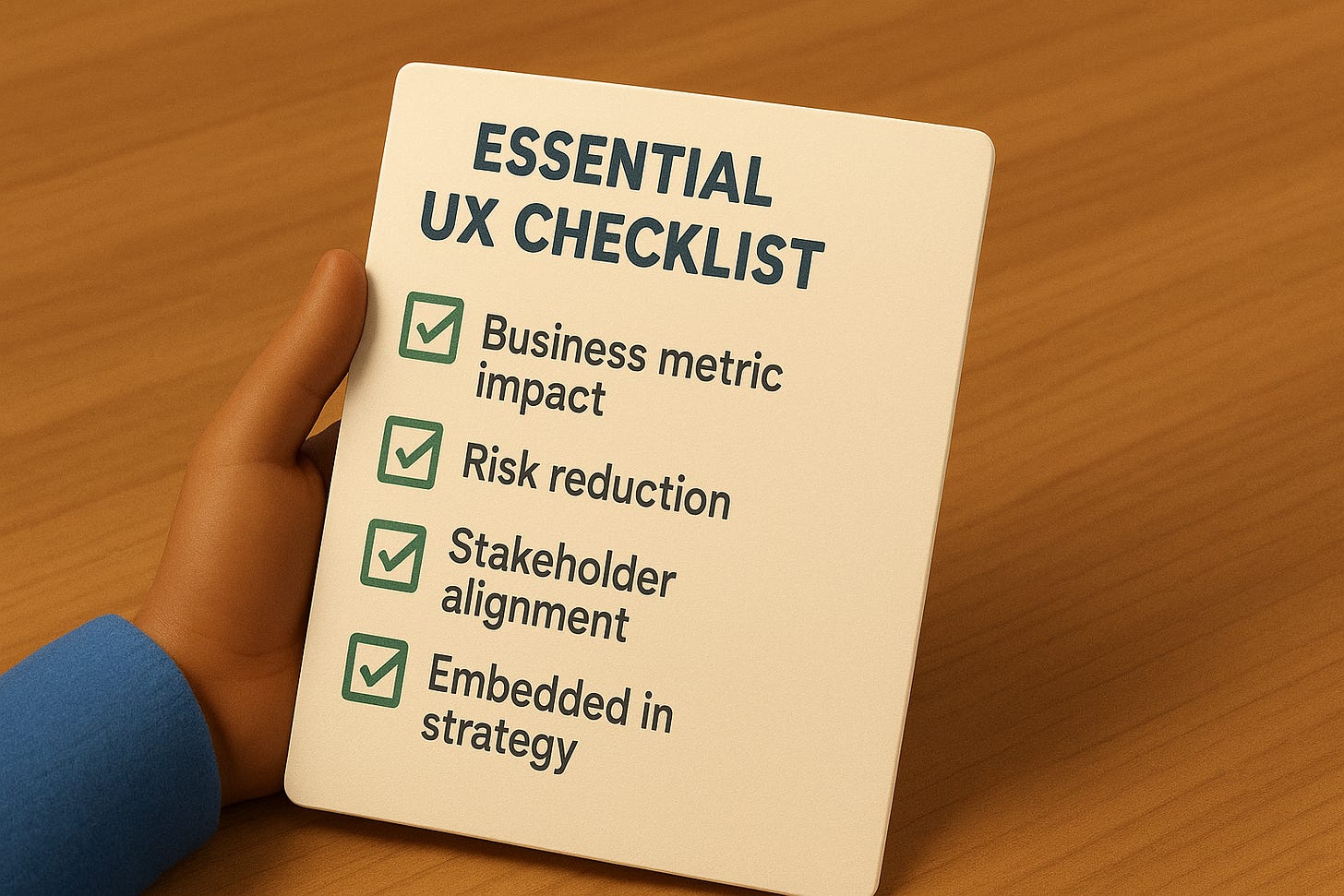UX Layoffs: Are We Seen as Essential or Optional?
Reflection on resilience and perception.
Over the past two years, UX has seen wave after wave of layoffs. Designers, researchers, and content strategists, even in companies that continue shipping products, have found themselves cut.
The pattern raises a hard question: Is UX seen as essential to the business, or optional when budgets tighten?
This issue unpacks how the industry got here, what’s shifting, and what it means for the future of UX roles.
In This Issue
The Current Reality: UX Roles Under Pressure
Why UX Is Often Cut First
What Separates “Essential” Teams From “Optional” Ones
The Role of AI: Threat or Support?
How UX Professionals Can Build Resilience
Industry Examples: Who’s Investing vs. Who’s Cutting
UXCON25 Spotlight: Future-Proofing Careers
Resource Corner
The Current Reality: UX Roles Under Pressure
The layoffs haven’t been isolated. From tech giants to mid-size startups, entire research teams have been dissolved. The message feels consistent: when money gets tight, UX is one of the first places companies look to cut.
But paradoxically, the demand for good experiences hasn’t declined. Products still need onboarding, accessibility, trust-building, and clear design. What’s shifted isn’t the need it’s the perception of value.
Why UX Is Often Cut First
Outputs vs. outcomes problem: Too many UX teams frame their value in deliverables (wireframes, reports) rather than results (retention, conversions).
Indirect line to revenue: Sales teams drive dollars. Engineering ships features. UX often gets framed as “supporting,” not “driving.”
Misunderstood scope: Leadership still thinks of UX as “making things pretty” rather than reducing risk, ensuring adoption, or cutting support costs.
What Separates “Essential” Teams From “Optional” Ones
Teams that survive cuts often:
Tie their work directly to business metrics (churn, support tickets, conversion rates).
Speak the language of stakeholders: ROI, risk mitigation, market differentiation.
Embed themselves in product and strategy conversations, not just design execution.
The Role of AI: Threat or Support?
AI can now prototype, generate copy, and even simulate test users. This raises the perception that UX can be automated.
But here’s the nuance:
AI can produce artifacts, but it cannot build trust, interpret nuance, or align with values.
Companies that replace UX with AI often end up with more friction, churn, and user complaints, which cost far more than they saved.
The smart teams are using AI to handle volume and speed, while researchers and designers focus on judgment, synthesis, and strategy.
How UX Professionals Can Build Resilience
Translate UX into outcomes. Don’t just say “we redesigned onboarding.” Show how it reduced drop-off by 12%.
Get closer to the business. Join roadmap, sales, and strategy conversations. Don’t stay in the design silo.
Learn to prioritize. Fix the high-severity, high-frequency problems first — and speak to their cost savings.
Use AI as leverage. Let machines handle analysis grunt work, but deliver the insights that influence decisions.
Industry Examples: Who’s Investing vs. Who’s Cutting
Investing: Healthcare and fintech companies continue hiring researchers because mistakes are costly.
Cutting: Ad-driven consumer apps often reduce UX first, betting on volume over quality.
Hybrid: SaaS companies are slimming research teams but expanding roles into ResearchOps + AI-assisted workflows.
These patterns suggest a divide: UX survives where errors = money lost.
⏳ 21 Days Until UXCON25
In exactly 21 days, UXCON25 will bring 400+ UX professionals, leaders, and learners together in Silver Spring, MD.
This conference isn’t about sitting in a room listening to theory. It’s about giving you the tools, connections, and clarity to move your career forward in 2025.
Resource Corner
Final Thought
UX is not dying. But how we position ourselves is under review.
If we keep selling design as outputs, we’ll be seen as optional.
If we show design as risk management, growth, and trust-building, we’ll be seen as essential.
The layoffs are a wake-up call. The question isn’t “Does UX matter?”
The question is “Can we prove it matters in business terms?”








I think it’s really a mix of all the factors you mentioned. The “fad” of UXR gave us a boost for a while, but now most companies are under real pressure to reduce headcount. At the same time, our field hasn’t evolved fast enough in how we connect our knowledge to business outcomes.
Too often, UX research has stayed siloed and relied on its own vocabulary instead of fully embedding into the broader business conversation. That’s kept us somewhat “cached” and less influential than we need to be.
If I had to rank it, I’d say:
1. Economic factors – the biggest driver.
2. Organizational immaturity – research was treated more as a trend than a core function.
3. Our own gaps in business alignment – we’ve been slower to show outcomes in a language executives already use.
In short: layoffs are happening now not just because of the economy or AI, but because we’re still early in our evolution as a true business tool.
We have been trying/working tirelessly to address this over the last 5 year. this newsletter and our conference and free courses are all a part of it
I think it’s really a mix of all the factors you mentioned. The “fad” of UXR gave us a boost for a while, but now most companies are under real pressure to reduce headcount. At the same time, our field hasn’t evolved fast enough in how we connect our knowledge to business outcomes.
Too often, UX research has stayed siloed and relied on its own vocabulary instead of fully embedding into the broader business conversation. That’s kept us somewhat “cached” and less influential than we need to be.
If I had to rank it, I’d say:
1. Economic factors – the biggest driver.
2. Organizational immaturity – research was treated more as a trend than a core function.
3. Our own gaps in business alignment – we’ve been slower to show outcomes in a language executives already use.
In short: layoffs are happening now not just because of the economy or AI, but because we’re still early in our evolution as a true business tool.